Structure and Magnetic Properties of a Bipyridine-bridged One-dimensional Ni(II) Coordination Polymer①
ZHANG Fu-Qing ZHOU Jing-Jing HUANG Qi-Mao ZHOU Hong PAN Zhi-Quan
?
Structure and Magnetic Properties of a Bipyridine-bridged One-dimensional Ni(II) Coordination Polymer①
ZHANG Fu-Qing ZHOU Jing-Jing HUANG Qi-Mao ZHOU Hong②PAN Zhi-Quan
(430073)
A polymer, [NiL(bipy)×2H2O]n(1, bipy = 4,4?-bipyridine), has been acquired by the reaction of Ni(OAc)2×4H2O with N,N?-bis(2-hydroxyl-5-fluorobenzyl)-2-hydrxylpropane dii- mine in the presence of 4,4?-bipyridine. X-ray crystallographic analysisshows that it is comprised of a mononuclear Ni(II) complex [NiL] linked by 4,4?-bipyridine. Its crystal crystallizes in the orthorhombic system, space group2/with22.595(3),18.395(2),= 15.434(2) ?,= 6155(1) ?3,D= 1.259 g/cm-3,= 8,M= 583.23,(000) = 2416.0,(Mo) = 0.681 mm-1,= 1.049,= 0.0512 and= 0.1108 for 6032 observed reflections (> 2()). There are water hexamers in the complex. A weak overall ferromagnetic behavior has been evaluated by Curie-Weiss rule and by the formula of alternating ferro-ferromagnetic coupling in one-dimensional Ni(II) chain, which gives g = 2.005(1) and J1= 0.31(3) cm-1.
bipyridine-bridged coordination polymer, Ni(II) complex, magnetic properties, water hexamer
1 INTRODUCTION
Self-assembly of small molecules has attracted much attention owing to their potential applications and interesting molecular topologies. The construc- tion of extended structures is generally contributed to the choice of appropriate molecular building blocks[1-6]. 4,4?-Bipyridine, a rigid bidentate spacer, is widely used as a bridging group. The studies on bipy-bridged complexes show that the spatial configuration and magnetic properties of this kind of complexes vary with ligands and metal ions. It has been reported that the use of bipy as bridging group along with suitable metal ions may lead to the spontaneous formation of discrete dimers, infinite 1D chains or 2D and 3D networks[7-9]. The supramo- lecular assemblies of bipy-bridged complexes can be ascribed to the coordination interaction of bipy[10-13].
On the other hand, the reaction of 5-X-salicyl- aldehyde (X = CH3, F, Cl) with diamine substances in a mol ratio of 2:1 will produce a Schiff base ligand, which contains at least four coordination atoms, two diimine nitrogen atoms and two phenoxide atoms. The reaction of these kinds of ligands with metal ions in the presence of bipy may form bipy-bridged complexes. To the best of our knowledge, no reports of such kind of coordination polymers have been found in literatures. Herein, we report the formation of the coordination self-as- sembly of a new mononuclear nickel complex bridged by bipy (the structure of the ligand is shown in Scheme 1) and the magnetic properties of the complex have been investigated.
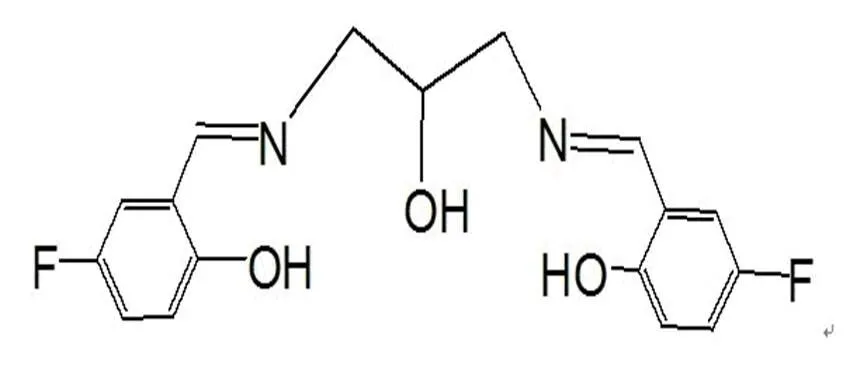
Scheme 1. Structure of H2L
2 EXPERIMENTAL
2. 1 Materials
All solvents and chemicals were of analytical grade and used as received, except methanol that was purified to anhydrous one by general method. N,N?-bis(2-hydroxyl-5-fluorobenzyl)-2-hydrxylpropanediimine (H2L) was preparedby a method described in the literature[14].
2. 2 Preparation of complex 1
To the solution of 2,6-diformyl-4-fluorophenol (0.141 g, 1 mmol) in 10 mLmethanol,5 mLme- thanol solution containing 2-hydrxylpropanedia- mine (0.045 g, 0.5 mmol) wasadded dropwise. After the resulting solution was stirred for 6 h, 6 mL methanol solution of NiCl2·6H2O (0.238 g, 1 mmol) was added and stirred for 2 h. bipy (0.192 g, 1 mmol) was added and stirred at room temperature for another 12 h. The resulting brown turbid solution was filtrated, and the crystals suitable for X-ray diffraction were obtained by evaporating the filtrate for six weeks. Yield: 20%. Anal. Calcd. for C27H26NiN4O5F2(%): C, 55.60; H, 4.49; N, 9.61. C27H26NiN4O5F2(%): C, 55.60; H, 4.49; N, 9.61.Found (%): C, 55.92; H, 4.56; N, 9.51. IR(KBr: cm-1):(C–H) 2908,(C=N) 1630 cm-1,(ClO4-1) 1081 cm-1, 624 cm-1.
2. 3 Physical measurements
IR spectra were recorded on a vector 22 FI-IR spectrophotometer using KBr disc. Magnetic suscep- tibility of a crystalline-powdered sample was mea- sured on a SQUID-based sample magnetic meter in the temperature range of 2.0~300 K, and the dia- magnetic corrections were made according to Pas- cal?s constants. Elemental analyses were performed on a Vario EL III CHNOS elemental analyzer.
2. 4 Crystal structure determination
A single crystal with dimensions of 0.22mm × 0.24mm× 0.28mm was mounted on a SMART-CCD area-detector diffractometer equipped with a gra- phite-monochromatic Moradiation (= 0.71073 ?). Data reduction and cell refinement were respectively performed by the SMART and SAINT programs[15]. The structure was solved by direct methods (Bruker SHELXTL) and refined on2by full-matrix least-squares (Bruker SHELXTL) using all unique data[16]. The non-H atoms were treated as anisotropic thermal parameters. Hydrogen atoms were located geometrically and refined in a riding mode. A total of 16963 reflections including 6032 independent ones (int= 0.0402) were collected in the range of 2.17≤≤26.00o at 291(2) K, of which 4422 (> 2()) were considered as observed. The final= 0.0512,= 0.1071 (= 1/[2(F2) + (0.05)2+ 1.99], where= (F2+ 2F2)/3) and= 1.049. The selected bond lengths and bond angles relevant to the nickel coordination spheres of the complex are listed in Table 1.
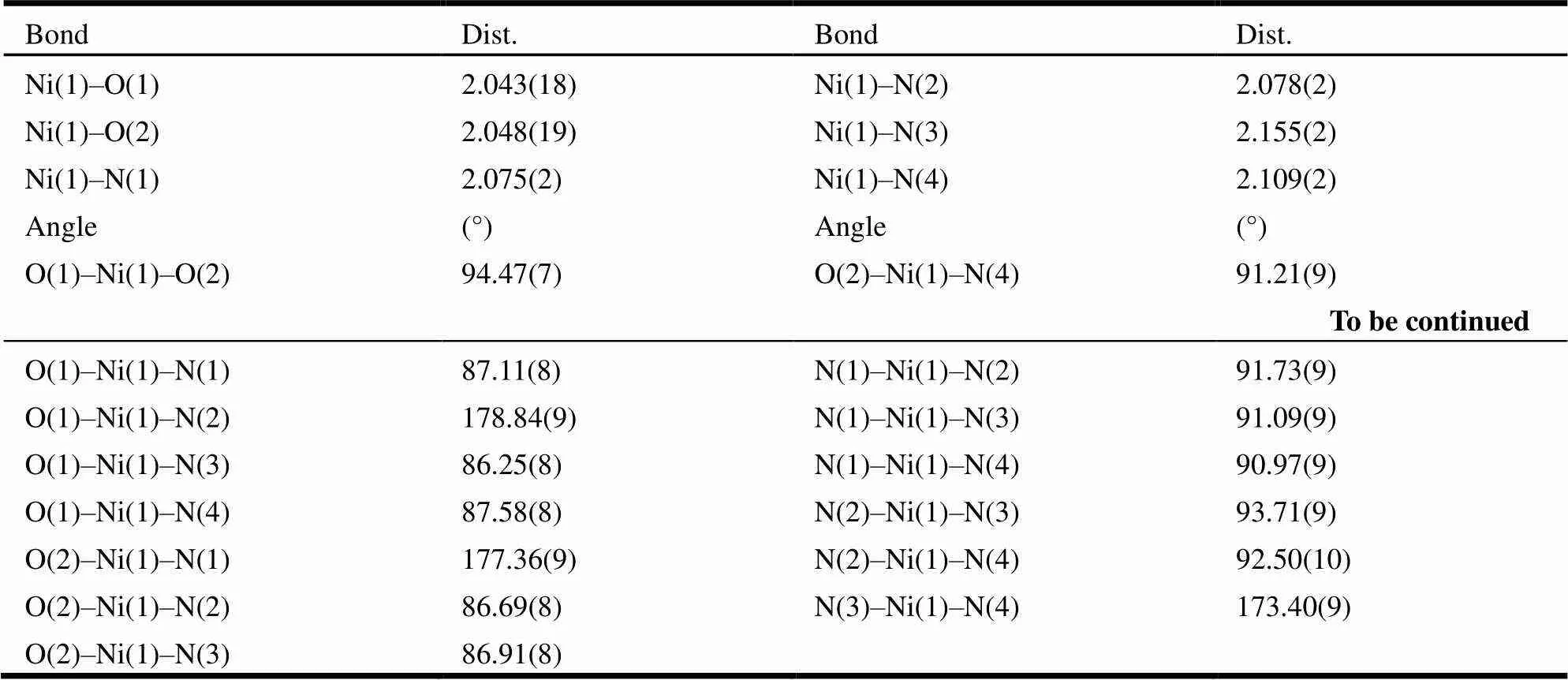
Table 1. Selected Bond Distances (?) and Bond Angles (o) for Complex 1
3 RESULTS AND DISCUSSION
3. 1 Description of the structure
Complex 1crystallizes in monoclinic space group/2. Theasymmetric unit of 1 consists of one nickel(II) ion, one L, one bipy molecule, and two water molecules. The structure of 1 is a one- dimensional chain coordination polymer consisting of mononuclear Nibuilding blocks. As shown in Fig. 1, the coordination polyhedron of Ni(1) ion can be approximately described as an octahedron. The basal plane is formed by two phenoxide atoms and two nitrogen atoms from L ligand and two apical positions are occupied by two nitrogen atoms from two bipy molecules. The distances of Ni–O and Ni–N in the basal plane are in the ranges of 2.04(2)~2.05(2) ? and 2.075(2)~2.078(2) ?, respectively. The apical Ni–N distances are 2.109(2)~2.155(2) ?. The Ni–O and Ni–N dis- tances in the coordination polyhedron are all in the normal ranges found in other reported com- pounds[17-18, 7]. The adjacent metal ions are con- nected by bridging bipy molecules to construct a linear polymer (Fig. 2). In the 1D chain structure, bipy acts as a bidentate connector to bridge the adjacent two Ni ions. The torsion angles of two pyridine rings in one bipy molecule and the adjacent one are 44.7(9)o and 34.8(1)o, respectively. And the torsion angle of two pyridine rings connected directly with Ni(II) is 85.4(8)o. The non-coplanar bypy connection mode has been reported in some literatures[19].
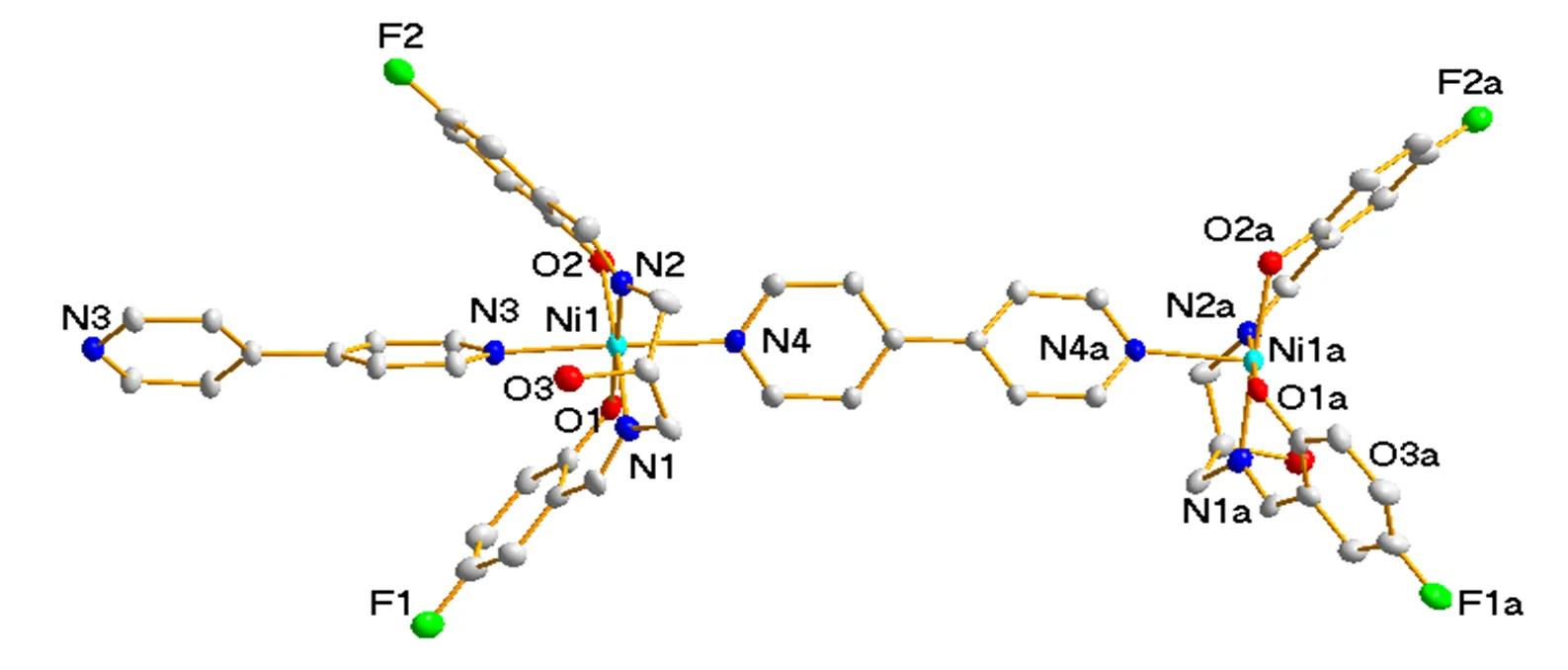
Fig. 1. A repeat unit in the polymer (Symmetry code a: 1–,, 1.5–)
Fig. 2. One-dimensional coordination polymer chain (Symmetry codes a: –,, 1.5–; b: 1–,, 1.5–; c: 1+,,)
Hydrogen bonding interactions between the chains are shown in Fig. 3. The adjacent chains are joined together by the hydrogen bonding interactions between hydrogen atoms of bipy in one chain and fluorine atoms in the adjacent chain with alternative mode as well as those between oxygen (O(1) and O(3)) and hydrogen atoms, as shown in Fig. 3. All O(1) and O(3) in one chain connect with O(3) and O(1) in adjacent different chains by the hydrogen bonding interactions, respectively. The above hydro- gen bonding interactions lead to the three-dimen- sional network of the polymer. Interestingly, there are water clusters between chains. The hydrogen bonding connection in a water hexamer is shown in Fig. 3b. The hydrogen bonding parameters are listed in Table 2.

Table 2. Hydrogen Bond Data
Symmetry codes a: 0.5+, 0.5+,; b: 1–,, 1.5–
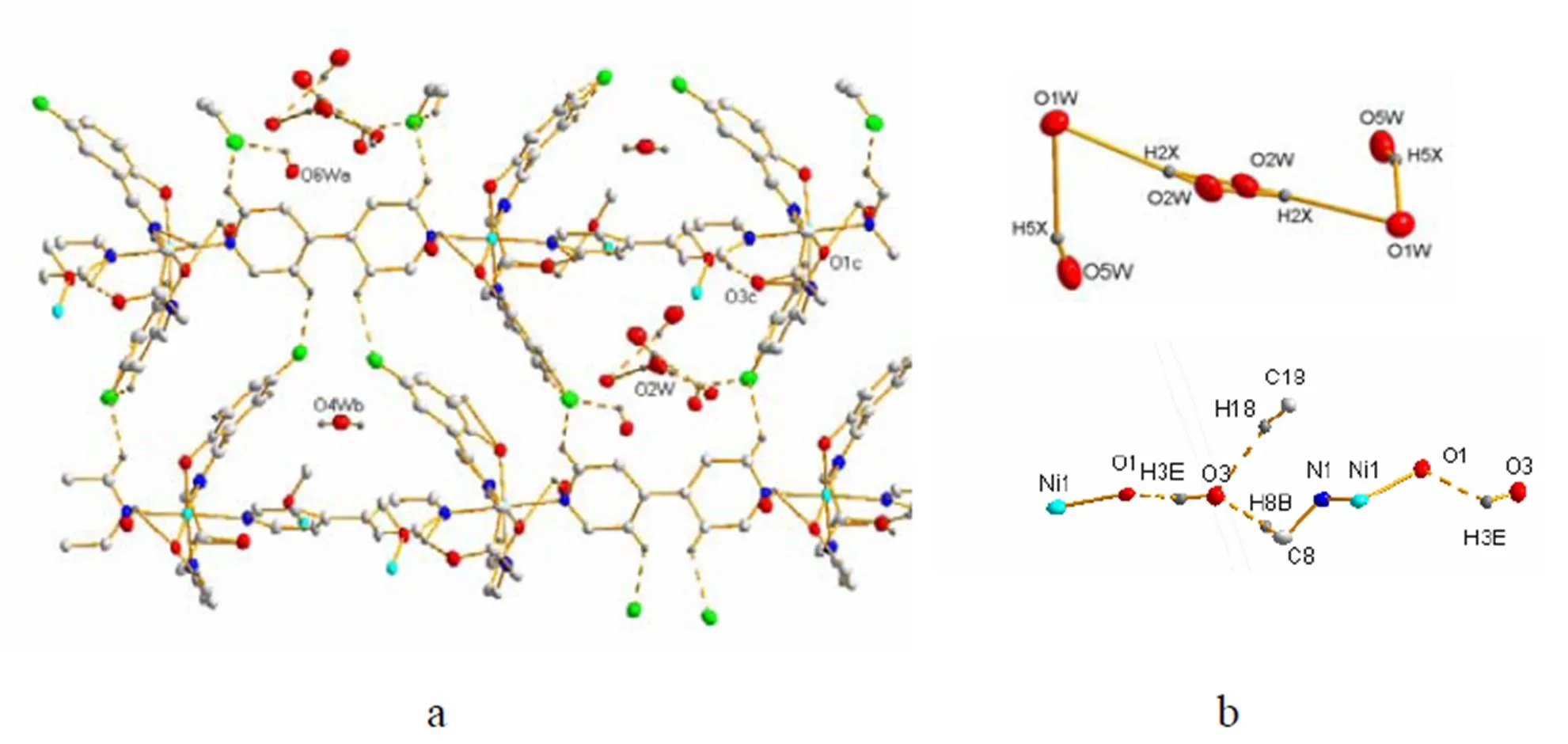
Fig. 3. a) Hydrogen bonding interactions between chains showing water hexamer; b) Connection in the water hexamer and the hydrogen bond interactions between O(1) and O(3) (Symmetry codes a: –0.5+, 0.5+,; b: 0.5–, 0.5–, 1–; c: 0.5+, 0.5+,)
3. 2 Magnetic properties
To determine the extent of magnetic interactions between themetal ions, magnetic susceptibility mea- surements were performedin the range of 2~300 K. The experimental effective magnetic mo- ments (eff) of the complex, determined from the equationeff= 2.828(m)1/2, has a value of 2.96emu K mol-1, which is equal to the theoretic value of 2.96 emu K mol-1calculated fromeff= g[S(S+1)]1/2(when g = 2.1, S = 1) based on a Ni-containing unit without any interaction between the nickel ions. Theexperimental data fit well with the Curie-Weiss formula,m=C/(–), which gives the best-fit parameters: C = 0.9957 cm3·K·mol–1,= 0.24 K, with a correlation coefficient= 0.99999 (Fig.4). The smallvalue corresponds to aweak ferro- magnetic exchange coupling between the nickel(II) ions. Due to the fact that each pyridine ring has a torsion angle with the adjacent one, the torsional bipy can also act as a magnetic pathway.
To further confirm the magnetic properties, the magnetic data have been also fitted according to equations 1 and 2, which illustrates the relationship of the parameterof one-dimensional S = 1 complex with alternating ferro-ferromagnetic coupling[20].
m= (222/3)(rr) (1)
rr= (A + Br+ Cr2+r3)/(Dr+ Er2+r3) (2)
wherer=/J,the A~E values are the fitting coefficients, which depend on(= 0, 0.1, 0.2, 0.4, 0.6, 0.8 or 1). The equations describing the relationship of A~E withhave been given in the literature. Least-squares fitting, shown in Fig. 5, of the experimental data led to the following values: g = 2.005(1),1= 0.31(3) cm-1,= 0.2(0) and R = 7.19′10-6(R is the agreement factor defined as R =?[()obs–()calc]2/?()obs)2). The smaller J value is comparable with that obtained by the Curie- Weiss formula.
4 CONCLUSION
A one-dimensional coordination polymer synthe- sized by a new multi-dentate nitrogen acyclic ligand and Ni(II) is reported. This polymer features with mononuclear nickel complex of the ligand (H2L) connected by bipy bridges. The chains are joined together by the hydrogen bonding interactions in the form of C–H×××F and C–H×××O. Moreover, water hexamer exists in the structure of the complex. The one-dimensional Ni(II) coordination polymer exhi- bits weak ferromagnetic interactions through tor- sional bipy bridges.
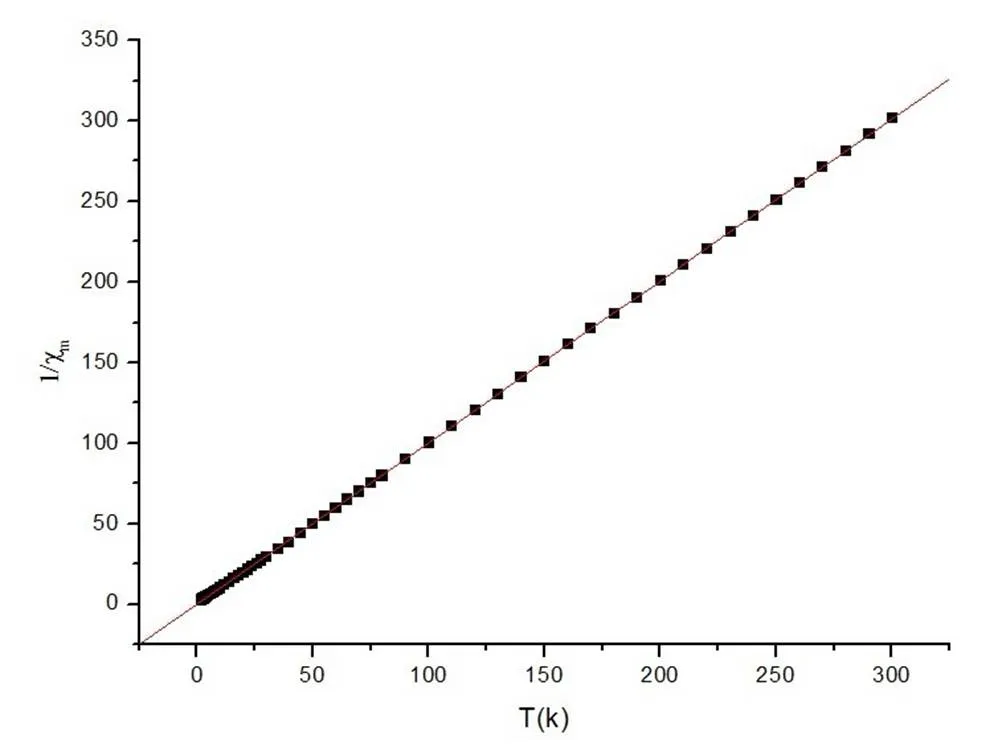
Fig. 4. Temperature dependence of the magnetic susceptibility inthe form of 1/mversus. The straight line is a least-squares fit to thedata
Fig. 5. Plot of observedmversusfor the complex. Solid line represents the best theoretical fit
(1) Liu, X.; Guo, G. C.; Wu, A. Q.; Huang, J. S. A novel stair-?like lithium coordination polymer constructed from 4,?4?-?bipyridine.. 2004, 7, 1261–1263.
(2) Liu, G. X.; Zha, X. C.; Wang, Y.; Nishihara, S.; Ren, X. M.Synthesis, crystal structure and magnetic properties of a nickel(II) coordination polymer based the V-?shaped ligands..2012, 22, 258–263.
(3) Zhou, H.; Chen, L.; Chen, R.; Peng, Z. H.; Song, Y.; Pan, Z. Q.; Huang, Q. M.; Hu, X. L.; Bai, Z. W. Hexamine copper(II) coordination polymers: synthesis, structure and magnetic properties.. 2009, 11, 671–679.
(4) Guo, Y. L.; Dou, W.; Zhou, X. Y.; Liu, W. S.; Qin, W. W.; Zang, Z. P.; Zhang, H. G.; Wang, D. Q. Influence of conformational flexibility on self-?assembly and luminescence properties of lanthanide coordination polymers with flexible exo-?bidentate biphenol derivatives.2009, 48, 3581–3590.
(5) Niu, C. Y.; Wu, B. L.; Zhang, H. Y.; Li, Z. J.; Hou, H. W. Chiral metal-?organic and supramolecular interpenetrating 3-?D frameworks constructed by one angular ligand and 4,?4?-?dipyridine.. 2008, 11, 377–380.
(6) Lu, T. B.; Xiang, H.; Luck, R. L.; Mao, Z. W.; Wang, D.; Chen, C.; Ji, L. N. A two-?dimensional coordination polymer with a brick wall structure and hydrophobic channels: synthesis and structure of a macrocyclic nickel(II) complex with 1,?3,?5-?benzenetricarboxylate.. 2001, 3, 168–169.
(7) Vo, V.; Kim, Y.; Nguyen, V. M.; Hong, C. S.; Kim, S. J. Syntheses, crystal structures and magnetic properties of coordination polymers Ni(NO2)?2and Ni(4,?4?-?bipy)?(NO2)?2.2009, 28, 1150–1154.
(8) Xu, J. Y.; Gu, W.; Bian, H. D.; Bian, F.; Yan, S. P.; Cheng, P.; Liao, D. Z.; Jiang, Z. H.; Shen, P. W. 1D zigzag coordination polymer [Cu(tacn)(4,?4?-?bipy)?]?n·(ClO4)?2n(tacn = 1,?4,?7-?triazacyclononane)?: structure, spectroscopic, and magnetic properties.. 2003, 6, 513–516.
(9) Woodward, J. D.; Backov, R.; Abboud, K. A.; Ohnuki, H.; Meisel, M. W.; Talham, D. R.Structural, thermal, and magnetic properties of three transition metal-?4,?4?-?bipyridine coordination polymers: [Ni(4,?4?-?bipy)?3(H2O)?2]?(ClO4)?2·1.4(4,?4?-?bipy)?·3(H2O)?; [Co(4,?4?-?bipy)?3(H2O)?2]?(ClO4)2·1.4(4,?4?-?bipy)?·3(H2O)?; [Cu(4,?4?-?bipy)?3(DMSO)?2]?(ClO4)?2·2(4,?4?-?bipy).2003, 22, 2821–2830.
(10) Zheng, L. M.; Wang, X. Q.; Wang, Y. S.; Jacobson, A. J. Syntheses and characterization of Co2(4,?4?-?bipy)?2(V4O12)?, Co(pz)?(VO3)?2and Co2(2-?pzc)?(H2O)?(VO3)?3(4,?4?-?bipy = 4,?4?-?bipyridine, pz = pyrazine, 2-?pzc = 2-?pyrazinecarboxylate).2001, 11, 1100–1105.
(11) Morsali, A.; Mahjoub, A. Coordination polymers of lead(II) with 4,?4?-?bipyridine: syntheses and structures.2004, 23, 2427–2436.
(12) Chen, H.; Mang, W. G.; Ma, C. B.; Chen, C. N.; Liu, Q. T. Crystal structure and magnetic property of a two-?dimensional manganese compound [Mn(PhCOO)?2(4,?4?-?bipyridine)?]?n.. 2007, 26, 687–690.
(13) Shen, H. Y.; Liao, D. Z.; Jiang, Z. H.; Yan, S. P.; Sun, B. W.; Wang, G. L.; Yao, X. K.; Wang, H. G. A new one-?dimensional 4,?4?-?bipy-?bridged compound [Mn(hfac)?2(4,?4?-?bipy)?]?n(hfac = hexafluoroacetylacetonato; 4,?4?-?bipy = 4,?4?-?bipyridine)?. Synthesis, crystal structure and magnetic properties.1998, 17, 1953–1957.
(14) Okawa, H.; Kida, S. Binuclear metal complexes. III. Preparation and properties of mononuclear and binuclear copper(II) and nickel(II) complexes of new macrocycles and their related ligands.Japan 1972, 45, 1759–1764.
(15) SMART and SAINT., Siemens Analytical X-systems, Inc., Madison, WI, USA 1996.
(16) Sheldrick, G. M.,Bruker AXS Inc., Madison.
(17) Choi, K. Y.; Lim, I. T.;Lee, K. C.;Oh, K. Y.; Kim, M. J. One-?dimensional coordination polymer assembled by tetraaza macrocyclic nickel(II) complex and trans-?1,?4-?cyclohexanedicarboxylate ligand.2012, 22, 295–300.
(18) Erer, H.; Yesilel, O. Z.;Dege, N.;Alpaslan, Y. B. One dimensional coordination polymer of nickel(II)?-?squarate with N,?N,?N?,?N?-?tetramethylethylenediamine, {[Ni(-?sq)?(H2O)?2(tmen)?]?·H2O}?n.2010, 20, 411–415.
(19) Hahn, F. E.; Radloff, C.; Pape, T.; Hepp, A. A nickel(II)?-?cornered molecular rectangle with biscarbene and 4,?4?-?bipyridine bridging groups.2008,27, 6408–6410.
(20) Monfort, M.; Resino, I.; El Fallah, M. S.; Ribas, J.; Solans, X.; Font-Bardia, M.; Stoeckli-Evans, H. Synthesis, structure, and magnetic properties of three new one-?dimensional nickel(II) complexes: new magnetic model for the first one-?dimensional S = 1 complex with alternating ferro-?ferromagnetic coupling.2001, 7, 280–287.
13 February 2014;
4 April 2014 (CCDC973540)
① We are thankful for the financial support from the National Natural Science Foundation of China (21171135), Hubei Provincial Science&Technology Department (2011BFA020) and Hubei Independent Innovation Base (HBIR07)
. Hong Zhou.E-mail: hzhouh@126.com
- 結(jié)構(gòu)化學(xué)的其它文章
- A 3-fold Interpenetrated lvt Cd(II) Network Constructed from 4-[(3-pyridyl)methylamino]benzoate Acid①
- Synthesis and Crystal Structure of a New Complex [Cu(C14H9O3)2(C5H5N)2(C2H5OH)2]①
- Quantum Chemical Study on the Structural Characteristics and Stability of AlSn±Clusters①
- Tuning of NaTaO3 Band Structure through Mn2+ Ion Doping and the Enhanced Visible Light Response①
- Proton Transfer Mechanism of Alanine Induced by Zn2+: a Theoretical Study①
- Chiral Resolution of β-dl-Phenylalanine Using Chiral Macrocyclic Nickel(II) Complexes①

